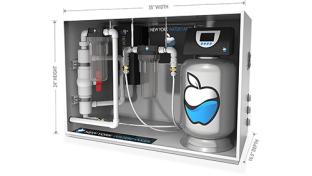Whole Foods Ends Year With a Bang
Four Whole Foods Market stores are slated to open in early November, capping the highest rate of growth since the grocer was acquired by Amazon in August 2017.
The store openings come as Amazon drops the $14.99 monthly fee associated with its Amazon Fresh delivery program. Grocery delivery is now free to those Prime members who live in zip codes in 2,000 cities where delivery is offered via Amazon Fresh or Whole Foods.
“Grocery delivery is one of the fastest growing businesses at Amazon, and we think this will be one of the most-loved Prime benefits,” said Stephenie Landry, Amazon’s VP of Grocery Delivery.
The move will put increased pressures on fulfillment costs while physical store expansion is surging. For example, there are four new Whole Foods stores set to open on Nov. 6 and 7 in Parsippany, N.J.; Tempe, Ariz.; South Lake Tahoe, Nev.; and Houston. The locations, ranging in size from 28,500 to 40,000 square feet, are in addition to 14 other stores that have opened this year and given Whole Foods a total of 505 locations at the end of October. The 18 locations that Whole Foods is opening this year are the most since the company was acquired in August 2017, at which time it operated 468 stores.
Despite the robust pace of expansion, Amazon’s financial results suggest that its physical stores are the weakest aspect of its business. When Amazon reported results for the fourth quarter of 2017, the first reporting period to reflect a full quarter of Whole Foods results, it disclosed sales at physical stores were $4.52 billion. Amazon’s physical stores sales have been spotty ever since and hit a new quarterly low of $4.2 billion in the most recent third quarter.
The $300 million decline over seven quarters is huge, considering Amazon has added book stores, Amazon Go stores and 4-Star stores. It has also grown the base of Whole Foods locations to 505 units, 37 more locations than when the deal closed on Aug. 28, 2017.
So what’s going on?
Whole Foods wasn't performing well when Amazon acquired the company, so weak sales reported at physical stores could suggest a further deterioration. Another explanation has to do with the manner in which the company reports results. Physical store sales are disclosed on the last page of the quarterly press release in a section called “supplemental financial information and business metrics.” It’s here where a footnote reveals that physical store sales are naturally sales where customers physically select items in a store. However, in contrast to the rest of the retail industry, sales from customers who order goods online for delivery or pickup at physical stores are included in the online stores category.
This financial reporting decision, obscures the true performance of Whole Foods, because Amazon has been sinking billions into fulfillment methods with a portion of those investments leveraging Whole Foods stores as grocery pickup and delivery hubs. Those sales would show up in a revenue bucket Amazon calls “online store sales.” It’s a category that includes all sorts of other sales fulfilled by the company’s vast distribution network as well as physical locations. Online store sales increased by 21% to $35 billion in the third quarter, according to the company.
Amazon’s physical store sales are likely to show further weakness in the quarters ahead, based purely on how the company reports results. That because Amazon spent more than $800 million in each of the last two quarters to expand its free one-day delivery program, and it's planning to spend another $1.5 billion during the fourth quarter. The popularity of the speedy delivery service helped the company exceed third-quarter revenue estimates, but the sales won’t show up in Amazon’s reported results for physical stores.
Based in Seattle, Amazon has more than 575,000 employees worldwide. Under its Whole Foods Market banner, the company is No. 10 on Progressive Grocer’s 2019 Super 50 list of the top grocers in the United States.







